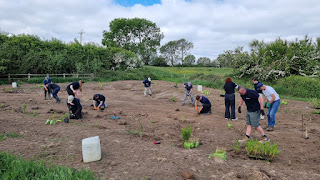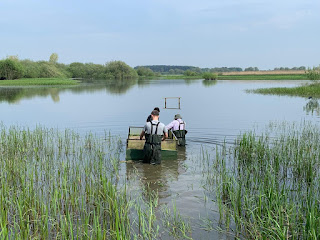A fantastic effort was made in the #LDV recently by the Britcon families & staff, who are not only building our new NNR Base, but working alongside our team helped to plant over 2,000 reeds in our new reedbed areas at Bank Island. Thanks to our friends at Tophill Low LNR we were also able to plant Greater Water Parsnip, Marsh Pea, Water Dock and other local wetland plants into the reedbeds, to increase diversity and act as reservoir sites for other areas. When visiting the site, you will see that this reedbed has been planted in memory of one of the much-loved members of the Britcon team, Ashley Kent, with the aim of the project being to create a real legacy in Ash’s memory.
We’re very grateful to the Britcon team and all of the other
volunteers who joined in on the day, including our own team who remained into
the evening to ensure a good watering of the plants due to the drought
conditions we were experiencing at the time – the rain this week might not have
been welcome to holidaymakers but it has certainly helped the reeds! This time
last year we would have needed to pump water out of the site to even try and
plant the reeds in there – what a difference a year makes!
Whilst the focus of a task day is always the task itself, we
always try to provide a memorable day for those involved, either by checking
the contents of the moth trap or ringing a few birds, all helping to showcase
the work that we do, as well as the Friends of the #LDV
and Natural England. If you might be interested in organising a task day on the
reserve for yourself or your team, please don’t hesitate to get in touch.













